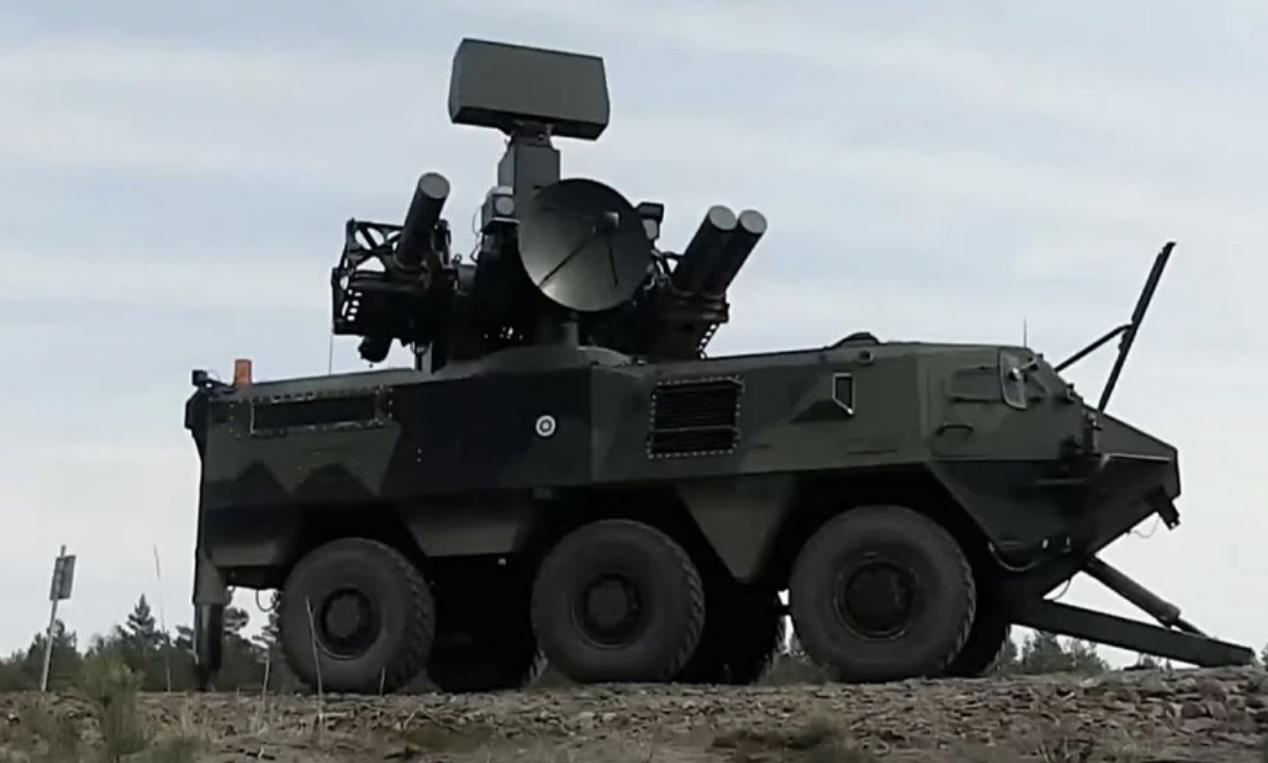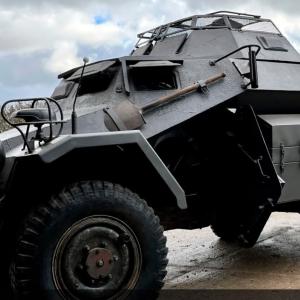
French Crotale SAM system
The Crotale is a compact, highly mobile short‑range air‑defence system conceived to give point and area protection against low‑altitude, high‑speed aircraft and later against cruise missiles and helicopters. Developed in France in the late 1960s and matured through the 1970s, the design was created from the outset as a self‑contained sensor‑to‑shooter package: onboard search/track radars, optical trackers for passive engagement, a fire‑control computer, and a short‑range supersonic missile all integrated onto wheeled chassis so a single battery element could deploy, engage, and relocate quickly. The philosophy is mobility and quick reaction — arrive, engage an inbound threat at short ranges, and displace before counter‑attack arrives.
Design and industry lineage trace back to Thomson‑CSF (the French electronics and defense firm that later became Thales). Thomson‑CSF led the original system engineering, sensor and fire‑control work; missile and launcher production involved multiple French defense manufacturers over successive upgrades. Through the life of the project the industrial names associated with it evolved with consolidation in European defense: original Thomson‑CSF engineering and missile work, later Thales involvement on radar/fire control, and missiles manufactured under license or with participation from other firms in export customers’ countries. Several nations also produced licensed or locally modified variants (the most notable derivative is China’s HQ‑7 family, developed from the French design under license and later indigenized), and later French upgrades were marketed as the NG (new generation) family with modernized radars and digital electronics.
A typical firing unit is a fully integrated vehicle or vehicle cluster that includes a search radar, acquisition/engagement radar and/or electro‑optical tracker, a launcher carrying multiple ready missiles, and a crew station with fire‑control computer. Mobility implementations varied — some armies used truck‑mounted single launcher vehicles with towed or integrated radars, others fielded trailer‑based launchers and separate radar/tactical vehicles — but the core remains an integrated, small‑footprint local‑area air defence cell. Launcher pods typically carry four missiles each (some launcher arrangements present eight missiles in two four‑round pods), allowing multiple shots without immediate reload.
In service concept and crew size: a single firing vehicle is normally operated by a small crew. Depending on the variant and national organization, a launcher/vehicle might be crewed by 3–6 personnel in routine operations (driver/vehicle commander, radar/operator, missile crew), with a battery comprised of several such vehicles plus a battery command vehicle, maintenance and reload vehicles. The architecture emphasizes automated detection‑to‑engage chains so a small crew can track and fire rapidly, but logistics and reload require additional personnel and vehicles.
Performance and weapons: the interceptor is a short‑range missile optimized for fast reaction. The earliest rounds were solid‑propellant, high‑acceleration interceptors with high‑G maneuverability to engage low‑level fast targets. General performance characteristics across early and upgraded versions are commonly described as roughly a maximum engagement range in the single‑digit to low‑double‑digit kilometre band: original systems typically engaged out to about 8–12 km and up to altitudes of a few thousand meters; later NG and improved missiles extended effective ranges modestly (commonly quoted up to ~11 km and in some marketing material higher, depending on variant and seeker). Intercept velocities are supersonic (typical top speeds cited in public sources are around Mach 2.0–2.3 for later missiles), enabling short time‑to‑kill against fast targets. Warhead mass for the interceptor is relatively small compared with medium‑range SAMs — public figures for similar short‑range interceptors place warhead weights in the low tens of kilograms (typically on the order of 15–20 kg of high explosive fragmentation), optimized to destroy or incapacitate aircraft/rotorcraft or to disable cruise missiles through blast/fragmentation and proximity detonation. Guidance is combined: command guidance from fire‑control during midcourse plus an active or passive seeker (later models incorporate improved infrared or radar seekers and improved electro‑optical trackers), and many versions include a proximity fuze for higher kill probability.
Accuracy and effectiveness: doctrine for the launcher relies on quick acquisition and high missile maneuverability rather than sheer range. In controlled conditions and when cued by its own radar or a higher‑level sensor, the package achieves a high effective intercept probability versus single subsonic aircraft targets. Exact hit probabilities vary strongly with target type, approach profile, electronic countermeasures, clutter, and the number of missiles fired per engagement; published battle reports and tests historically show good performance against attack aircraft and helicopters at short ranges, more limited effectiveness versus modern sea‑skimming anti‑ship missiles unless fielded in upgraded NG configurations with modern seekers and reaction sensors. The short engagement timelines at low altitude place greater demands on sensor resolution and missile acceleration; the design emphasizes very fast sensor‑to‑shooter cycles to compensate.
Operational history and use: the system has been widely exported and served with numerous air forces and navies. It has been adapted to naval roles (naval mounts and variants) and to land mobile batteries. Several countries developed local production or license variants, leading to derivative systems such as China’s HQ‑7 series. Batteries and derivatives have seen operational deployments and have been credited with successful engagements in regional conflicts, used both in national airspace defence and to protect high‑value sites. Because engagement reports and post‑action attribution can be complex and sometimes politically sensitive, the detailed list of combat kills often varies by source; broadly, the platform and its derivatives have a record of reliable point‑defence performance in conflicts where short‑range air defence was decisive at the local level. The system also saw deployment in coalition operations (for example by French forces in expeditionary deployments) where it provided local air defence for bases and task groups.










